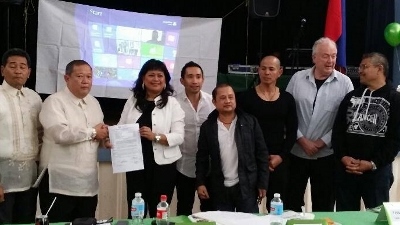Historically, the Tausugs consider themselves superior to the Samals and regard their group as the true Muslims of the area. They believe they descended from the old nobility. Unusual bravery and high respect for power and authority traditionally reinforced these attitudes.
The Tausugs are extremely hospitable, generous and friendly to people in their area,characteristics which are also true among the Samals. The Tausugs are more cosmopolitan, being more exposed and advanced. But both are open to external influences.
For their part, the sedentary Samals think of themselves as honest hardworking and religious. They regard the Tausugts as cruel and treacherous and nomadic Samal Laut or Pala-u (Badjaos) as primitive, pagan, and uneducated.
Perhaps, because of the attitudes of the Tausugs and Samals, the Badjaos are considered more as outcasts or luwa’ans as they are sometimes referred to pejoratively. They are the least intensively Islamized of all the Filipino Muslims, being mainly animistic in their customs and beliefs. A Badjao is not proudbut there is in him that strong sense of humility. He abhors violence and shocked to be involved in it. He tends to be individualistic and weary of strangers in his daily activities.
To the Badjaos, one’s kinship is generally found within his own geographic area. Most of them fail to adopt a sedentary life as their economic lifestyle seems to be centred on maritime numad ismwhich they consider as their only means of survival.
Some Badjaos have wandered throughout the entire Sulu Sea but others seldom travel beyond a radius of 40 kilometers from their ‘sea villages’ which consist mainly of boats moored near a permanent settlement. It was for this type of dwelling that they are sometimes called Pala-u.
The Badjaos like to travel and are known to abandon their current port at the slightest trouble. They often travel for economic reasons and partly from fear of the sedentary Samals and the Tausugs. Among the young men the natural yearning is to satisfy his wanderlust.
As stated earlier, the Yakans are somewhat isolated from the rest of the ethno-linguistic groups. It is not surprising that their relationship with the Tausugs, the Samals, and the Badjaos is reduced to a minimum. among the ethnic groups marriage is often limited only to unions within one group.
Although considered before as ‘undesirable,’ intermarriage among people of different ethnic groups is now, however, slowly being accepted. An increasing number of intermarriages between Badjaos and sedentary Samals has been particularly observed in Bongao. Further north, Tausug-Samal unions are also becoming ordinary features of the community.
Religion is another index for identifying relationships between groups, which have been largely influenced by traditional values. Both the Tausugs and Samals share religious customs with other coastal Muslims in Borneo.
More recently the migration of Christians from the Visayas and Luzon is slowly changing the economic and social lifestyles in the region.







Leave a Reply